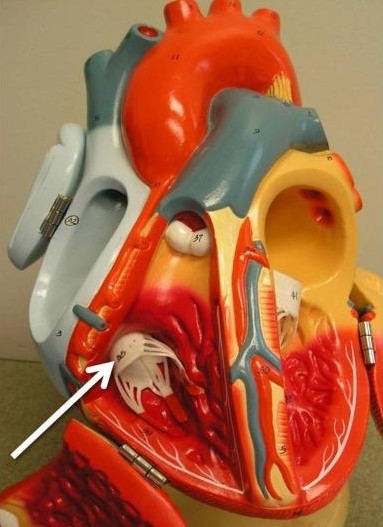Pathologies of the tricuspid valve

Written by Dimitrios Vrachatis, Cardiologist Specialist, PhD National & Kapodistrian University of Athens.
Pathologies of the tricuspid valve and their management
The tricuspid valve plays an important role in maintaining proper blood flow
between the right atrium and the right ventricle. The diseases that affect the
tricuspid valve can lead to significant cardiovascular complications if
They are not accurately diagnosed and effectively treated.
Tricuspid valve diseases are generally divided into two main categories: the
tricuspid valve (TR) insufficiency and tricuspid valve stenosis. The
failure, the more common of the two, occurs when the valve does not close properly, with
result in blood flow back to the right atrium during abdominal
contraction. Tricuspid stenosis, on the contrary, involves narrowing of the valve,
impeding the flow of blood from the atrium to the ventricle.
Causes and risk factors
The aetiology of tricuspid valve disease is varied and includes both
congenital as well as acquired factors. Congenital conditions, such as an abnormality
Ebstein, are present at birth and affect the structural integrity of the
valve. Acquired causes include rheumatic heart disease, endocarditis
(infection of the heart valves) and the use of certain drugs or illegal
drugs that can harm the cardiac valves.
The risk factors that increase the likelihood of developing diseases of the
tricuspid valve are age, history of infectious endocarditis, the presence of
other heart conditions, such as left heart valve disease, and conditions that
lead to swelling of the right heart and increased pressure, such as pulmonary
hypertension.
Symptoms and clinical manifestations
Symptoms of tricuspid valve disease often manifest as general
symptoms of heart failure due to retrograde blood flow or heart failure
obstruction caused by the malfunction of the valve. These include:
fatigue, swelling of the legs and abdomen (edema), pulsations in the veins of the neck
and, in severe cases, liver congestion and failure. It is worth noting that
symptoms may remain imperceptible or undetected until the disease
significantly progresses.
How are tricuspid valve diseases diagnosed?
The diagnosis of tricuspid valve disease involves a combination of
clinical evaluation, imaging studies and sometimes interventional tests.
Ultrasound, cardiac MRI, cardiac MRI, electrocardiogram
and cardiac catheterisation can prove to be valuable tools for
diagnosis.
How are tricuspid valve diseases treated?
The treatment of tricuspid valve disease depends on the severity
the condition, the presence of symptoms and the underlying cause.
- In cases where surgery is not immediately necessary or in
patients with contraindications for surgery, medical treatment
focuses on managing the symptoms and underlying causes.
This may include diuretics to reduce the swelling, medicines
for the management of heart failure and the treatment of underlying
conditions such as pulmonary hypertension.
- Surgical options are considered for symptomatic patients or for patients
with severe valve dysfunction and include repair or replacement of the valve
replacement of the valve. Valve repair is preferred over valve repair
replacement due to the better results and the lower
risk of complications. Replacement of the tricuspid valve is considered when the
repair is not possible. - Advances in technology have introduced catheter-based interventions for
restoration of the tricuspid valve, offering a less invasive
option for high-risk patients. These procedures, although located
still in early stages, have shown promising results in
reducing reflux and improving patients’ symptoms.
Studies show that surgical correction of tricuspid valve disease,
especially when carried out before the appearance of advanced symptoms
heart failure, leads to improved survival rates and quality of life.
Furthermore, the evolution of minimally invasive techniques represents significant progress.
potentially broadening treatment options for patients who are not candidates
for traditional surgery.
Prevention tips
Given the complex nature of tricuspid valve disease and the
association with broader cardiovascular and systemic diseases, the emphasis on
prevention is vital. This includes managing risk factors,
such as high blood pressure, smoking and obesity, which contribute to
in the development of heart valve diseases; Early detection and treatment
of these situations can play an important role in the prevention of
the occurrence or progression of tricuspid valve disease.
Tricuspid valve diseases, which include both insufficiency and
stenosis, pose significant challenges due to the complex etiology and
their various clinical manifestations. The advances in diagnostic imaging, the
surgical techniques and minimally invasive procedures have significantly improved
the management and prognosis of these diseases. A patient-centred approach,
with an emphasis on early and individualized treatment strategies, is of paramount importance.
Importance for optimizing outcomes.
